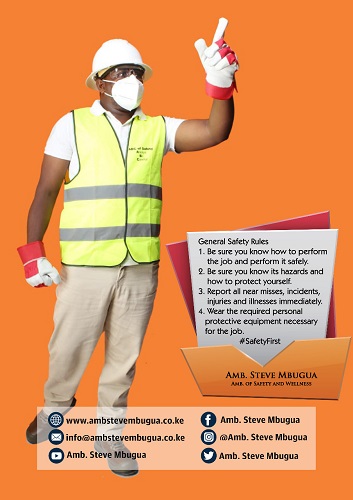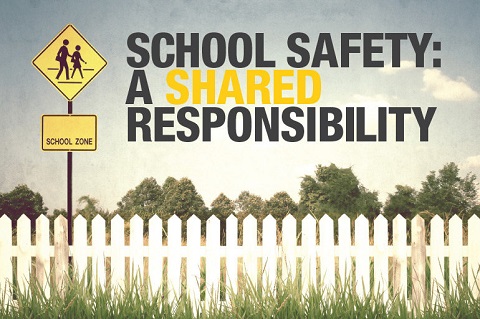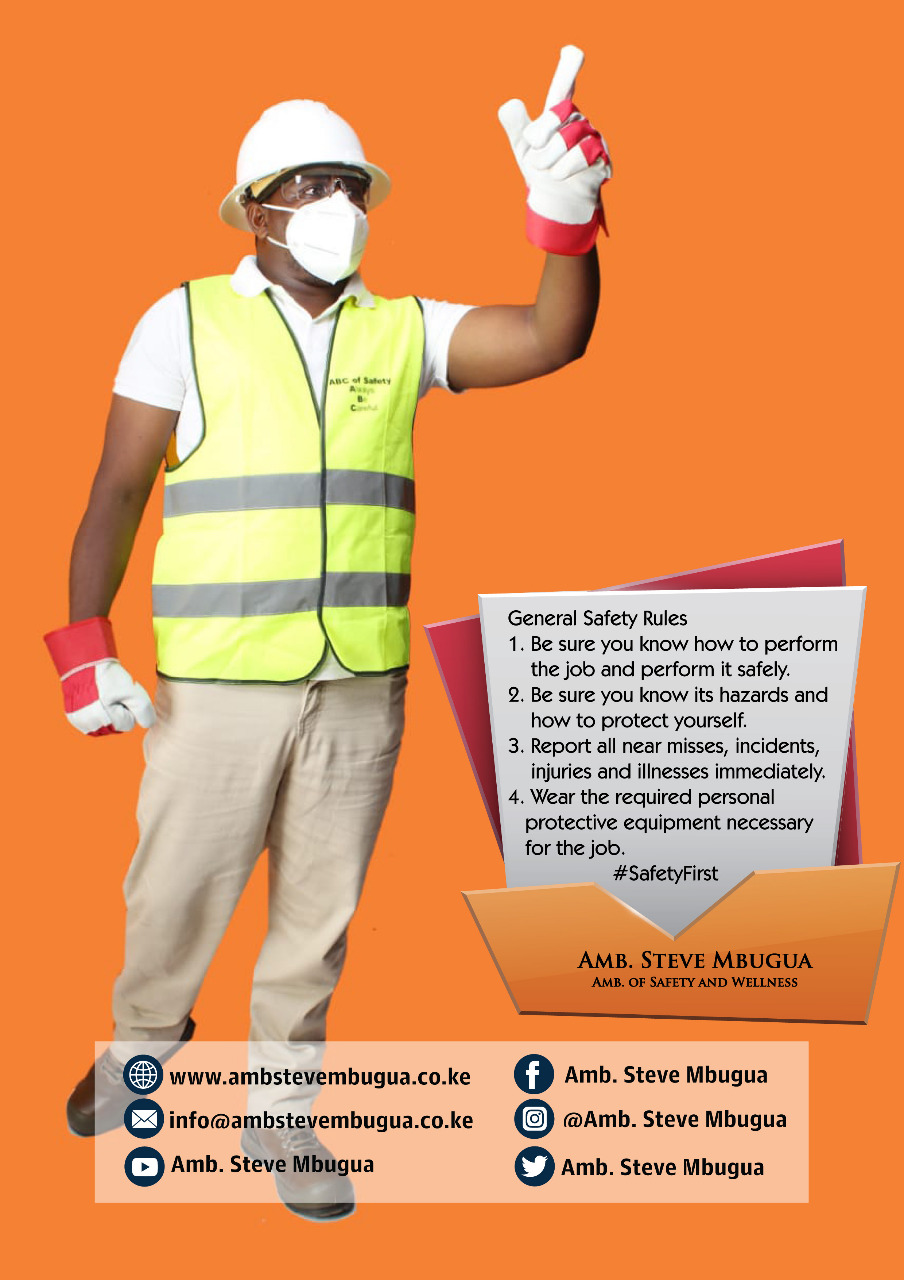Event safety is paramount to ensuring that gatherings, whether large or small, are conducted securely and smoothly. As Ambassador Steve Mbugua, the globally recognized Ambassador of Safety, I am committed to advancing safety practices for events to protect attendees, staff, and organizers. In this article, we explore essential strategies for enhancing event safety, including risk assessments, crowd management, emergency planning, and adherence to safety regulations. By prioritizing safety, we can prevent incidents, manage potential hazards, and create a positive and secure environment for everyone involved. Let’s delve into the key components of effective event safety management and work together to ensure that every event is safe and successful.
Sound and public safety equipment are critical components in various environments, including public venues, workplaces, educational institutions, and healthcare facilities. Ensuring the safety of these equipment and their effective usage is paramount to protect people and property. This comprehensive guide details the types, classifications, common hazards, safety measures, latest trends, and regulatory compliance associated with sound and public safety equipment.
Classification of Sound and Public Safety Equipment
1. Sound Systems
o Public Address (PA) Systems
o Emergency Alert Systems
o Concert and Event Sound Systems
o Intercom Systems
2. Public Safety Equipment
o Fire Safety Equipment
o Emergency Medical Equipment
o Security Systems
o Evacuation Equipment
1. Sound Systems
1.1 Public Address (PA) Systems
Definition:
• Used to amplify and distribute sound throughout a facility or outdoor area.
Safety Considerations:
• Volume Control: Ensure sound levels are safe to prevent hearing damage.
• Equipment Placement: Secure placement to prevent tripping hazards and equipment damage.
1.2 Emergency Alert Systems
Definition:
• Systems designed to alert individuals of emergencies through audio signals.
Safety Considerations:
• Audibility: Ensure alerts are loud and clear enough to be heard in all areas.
• Redundancy: Backup power sources to ensure functionality during power outages.
1.3 Concert and Event Sound Systems
Definition:
• High-powered systems used for live performances and events.
Safety Considerations:
• Hearing Protection: Provide ear protection for staff and audience.
• Rigging Safety: Securely rigging speakers and equipment to prevent falls.
1.4 Intercom Systems
Definition:
• Communication systems used within buildings to relay messages.
Safety Considerations:
• Regular Testing: Regular checks to ensure all components are functioning.
• User Training: Training staff on proper usage and emergency procedures.
2. Public Safety Equipment
2.1 Fire Safety Equipment
Types:
• Fire Extinguishers
• Smoke Detectors
• Fire Alarms
• Sprinkler Systems
Safety Considerations:
• Regular Maintenance: Routine checks and servicing to ensure readiness.
• Accessibility: Ensure equipment is easily accessible and not obstructed.
2.2 Emergency Medical Equipment
Types:
• Automated External Defibrillators (AEDs)
• First Aid Kits
• Stretchers and Evacuation Chairs
Safety Considerations:
• Training: Ensure staff are trained in the use of medical equipment.
• Inspection: Regular inspections to check for expired items and functionality.
2.3 Security Systems
Types:
• Surveillance Cameras
• Intrusion Alarms
• Access Control Systems
Safety Considerations:
• Data Security: Secure storage of surveillance data to protect privacy.
• System Updates: Regular updates to software and hardware to prevent vulnerabilities.
2.4 Evacuation Equipment
Types:
• Emergency Exit Signs
• Escape Ladders
• Evacuation Chairs
Safety Considerations:
• Proper Installation: Ensure signs and equipment are correctly installed and clearly visible.
• Training Drills: Regular evacuation drills to familiarize occupants with procedures.
Common Hazards in Sound and Public Safety Equipment
1. Electrical Hazards
2. Tripping Hazards
3. Hearing Damage
4. Malfunctioning Equipment
5. Obstructed Access
6. Inadequate Training
7. Data Breaches
8. Power Failures
9. Equipment Falls
10. Improper Maintenance
Safety Measures
1. Electrical Hazards
Preventive Actions:
• Proper Grounding: Ensure all equipment is properly grounded.
• Inspections: Regular inspections of wiring and connections to detect wear and tear.
2. Tripping Hazards
Preventive Actions:
• Cable Management: Use cable trays and covers to secure cables and prevent tripping.
• Clear Pathways: Keep pathways clear of equipment and obstructions.
3. Hearing Damage
Preventive Actions:
• Volume Limits: Set maximum volume levels to prevent hearing damage.
• Hearing Protection: Provide ear protection for staff and users exposed to high noise levels.
4. Malfunctioning Equipment
Preventive Actions:
• Regular Maintenance: Scheduled maintenance and testing of equipment.
• Spare Parts: Keep an inventory of spare parts for quick repairs.
5. Obstructed Access
Preventive Actions:
• Clear Signage: Ensure all safety equipment is clearly marked and easily accessible.
• No Blockages: Regularly check that exits and equipment are not blocked.
6. Inadequate Training
Preventive Actions:
• Training Programs: Regular training sessions for staff on equipment use and safety protocols.
• Certification: Ensure staff have the necessary certifications for operating safety equipment.
7. Data Breaches
Preventive Actions:
• Encryption: Encrypt data from security systems to protect against unauthorized access.
• Access Control: Implement strict access controls for sensitive data.
8. Power Failures
Preventive Actions:
• Backup Systems: Install backup power sources such as generators or UPS systems.
• Regular Testing: Regularly test backup systems to ensure functionality.
9. Equipment Falls
Preventive Actions:
• Secure Mounting: Properly mount and secure equipment to prevent falls.
• Safety Inspections: Regularly inspect mounting hardware and fixtures.
10. Improper Maintenance
Preventive Actions:
• Maintenance Schedule: Develop and adhere to a maintenance schedule for all equipment.
• Record Keeping: Keep detailed records of all maintenance activities and inspections.
Latest Trends in Sound and Public Safety Equipment
1. Smart Sound Systems: Integration with IoT for real-time monitoring and control.
2. Wireless PA Systems: Enhanced flexibility and ease of installation.
3. Biometric Access Control: Using fingerprints or facial recognition for security.
4. AI-Enhanced Surveillance: Advanced analytics for detecting unusual activity.
5. Portable Emergency Kits: Compact, all-in-one kits for rapid response.
6. Green Technologies: Eco-friendly fire suppression systems.
7. Wearable Safety Devices: Wearables that alert users to hazards.
8. Remote Monitoring: Ability to monitor and control systems from remote locations.
9. Cloud-Based Data Storage: Secure storage and easy access to surveillance footage.
10. Enhanced User Interfaces: More intuitive interfaces for operating safety equipment.
11. Voice-Activated Systems: Hands-free operation of PA and alert systems.
12. Real-Time Tracking: GPS tracking for emergency response equipment.
13. Improved Battery Technology: Longer-lasting batteries for portable devices.
14. Integration with Building Management Systems: Centralized control of safety systems.
15. Proactive Maintenance Alerts: Predictive maintenance using AI and sensors.
Safety Audits and Inspections
Frequency and Scope:
• Regular Audits: Monthly and annual audits to ensure compliance and identify risks.
• Comprehensive Inspections: Includes functionality tests, physical condition checks, and compliance verification.
Documentation:
• Audit Reports: Detailed reports highlighting findings, corrective actions, and follow-up schedules.
• Maintenance Logs: Keeping records of all maintenance activities and equipment checks.
Safety Training
Training Programs:
• Initial Training: Comprehensive training for new employees on safety protocols.
• Refresher Courses: Regular refresher courses to keep employees updated on the latest safety practices.
Training Content:
• Hazard Identification: Recognizing potential hazards with sound and public safety equipment.
• Emergency Procedures: Steps to take in case of emergencies.
• PPE Usage: Proper use and maintenance of personal protective equipment.
• First Aid: Basic first aid training for injuries related to equipment usage.
Regulatory Compliance
Key Regulations:
1. OSHA Standards: Compliance with Occupational Safety and Health Administration (OSHA) standards.
2. NFPA Codes: National Fire Protection Association (NFPA) codes for fire safety equipment.
3. FCC Regulations: Federal Communications Commission (FCC) regulations for sound equipment.
4. ADA Compliance: Americans with Disabilities Act (ADA) compliance for accessibility of safety systems.
5. UL Certification: Underwriters Laboratories (UL) certification for electrical safety.
6. Local Building Codes: Compliance with local building codes for structural and electrical safety.
7. Data Protection Laws: Ensuring compliance with data protection regulations for surveillance systems.
8. Emergency Planning and Community Right-to-Know Act (EPCRA): Reporting hazardous materials stored on-site.
9. Health and Safety at Work Act: Compliance with health and safety regulations for worker protection.
10. Energy Efficiency Regulations: Following energy efficiency regulations to minimize environmental impact.
11. Worker Training Requirements: Adhering to regulations requiring regular worker training and certification.
12. NFPA 72: National Fire Alarm and Signaling Code for installation and maintenance of fire alarm systems.
Sound and public safety equipment are vital components for ensuring the safety and well-being of individuals in various environments. By understanding the different types of equipment, implementing robust safety measures, staying updated with the latest trends, and adhering to regulatory standards, organizations can create a safe and secure environment. Continuous training, regular safety audits, and proper maintenance are essential elements of an effective safety program for sound and public safety equipment.
In conclusion, safety is a critical aspect of organizing and managing events, ensuring the well-being of all participants and the smooth execution of activities. As the Ambassador of Safety, I have emphasized the importance of thorough risk assessments, effective crowd management, and comprehensive emergency planning. By implementing these strategies, event organizers can significantly mitigate risks, enhance safety, and foster a secure environment for attendees and staff. Let us commit to championing event safety and collaborate to create events where safety and enjoyment are seamlessly integrated. Embracing these practices not only protects lives but also supports the overall success and positive experience of every event.
READ MORE
Crowd Safety and Management
Public Event Management
Workplace Safety Video
Largest Safety Equipment Shop
Environmental Safety


















